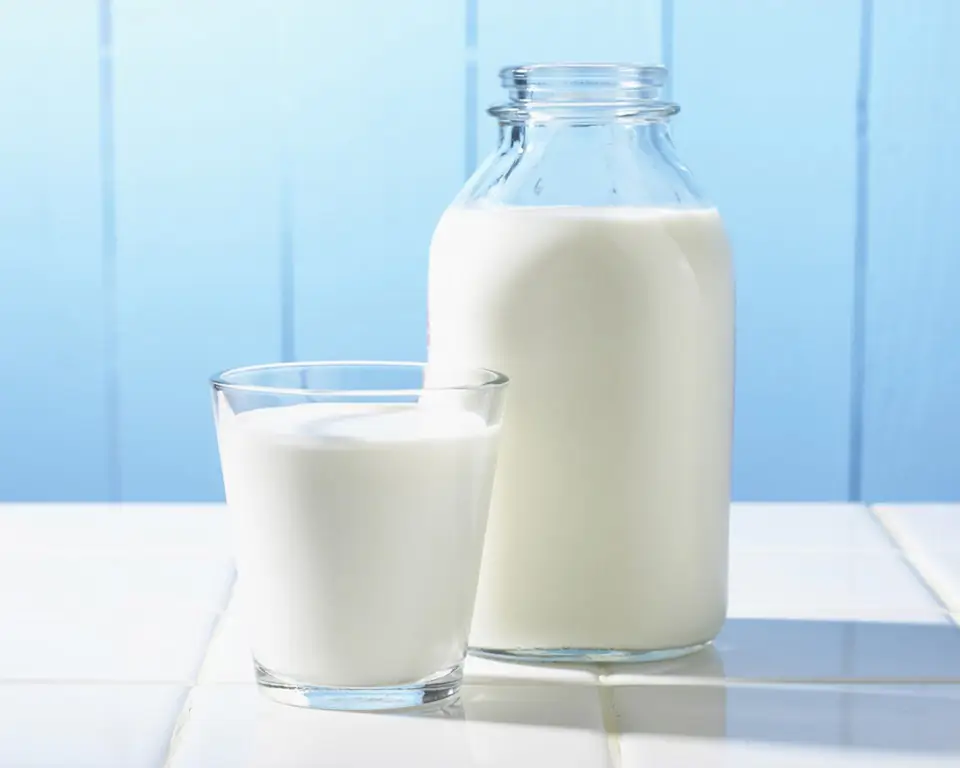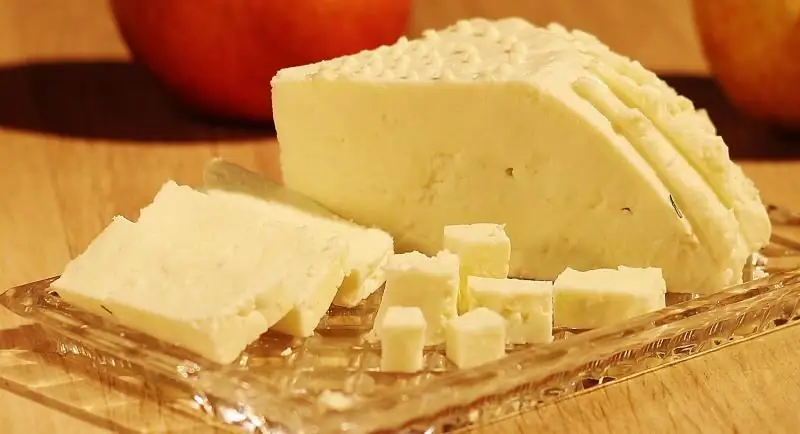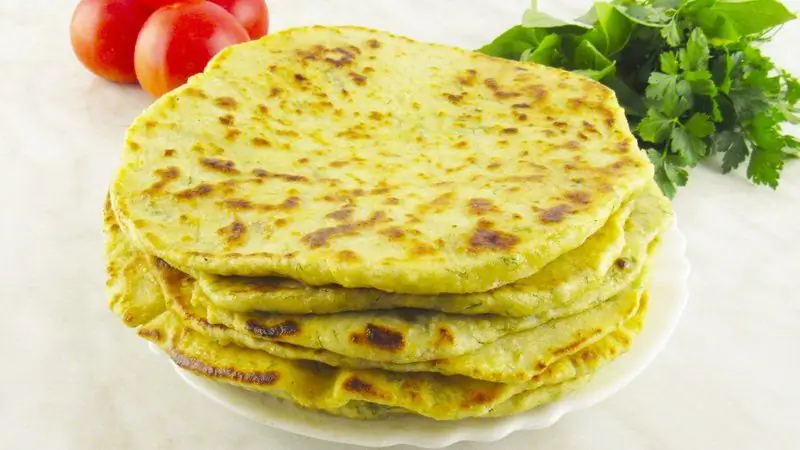
Table of contents:
- No cheating: we check the quality and naturalness of the cottage cheese ourselves
- Why is cottage cheese worth checking for quality
- Curd or curd product?
- Home laboratory
- Video: mass to the masses - why is the curd product dangerous
- Video: what should be real cottage cheese
- Video: the myth of cheap "village" cottage cheese
- Author Bailey Albertson [email protected].
- Public 2023-12-17 12:53.
- Last modified 2025-01-23 12:41.
No cheating: we check the quality and naturalness of the cottage cheese ourselves

The high value of cottage cheese for a healthy diet is often used by some manufacturers as an opportunity to make money on the counterfeit of this popular fermented milk product. In a supermarket or in the market, the customer is guided by the quality information provided by the manufacturer, which is not always true. An independent check of the naturalness of cottage cheese at home will help answer two questions: is the purchased cottage cheese worth attributing to a dietary dish and whether to become a regular customer of its manufacturer. So let's check it out!
Content
- 1 Why is cottage cheese worth checking for quality
-
2 Curd or curd product?
- 2.1 Table: possible differences in the composition of curd and curd product
- 2.2 Under what conditions is a curd product useful
- 2.3 About fat and palm oil
-
3 Home laboratory
- 3.1 We read the composition and count the bacteria
- 3.2 Naturalness of cottage cheese - the test of time
- 3.3 Iodine will indicate starch
- 3.4 The presence of chalk and soda will reveal acid
- 3.5 Vegetable fat - let's taste it
- 4 Video: mass to masses - what is the danger of a curd product
- 5 Video: what should be real cottage cheese
- 6 Video: the myth of cheap "village" cottage cheese
Why is cottage cheese worth checking for quality
Cottage cheese is a traditional product for Russians, the demand for which is increasing not only due to national preferences in food, but also due to its relative cheapness compared to cheese and butter. The nutritional value of this popular fermented milk product is represented by a high, up to 18%, content of complete, easily digestible protein and a low, not more than 3%, carbohydrate content, as well as calcium, phosphorus, vitamins and enzymes included in the composition. Such dietary indicators make cottage cheese an irreplaceable product in children's, medical and sports nutrition, which naturally increases the interest of unscrupulous manufacturers in filling such an attractive niche.

Curd is cheaper than cheese and butter, but no less useful
Forged "milk", including cottage cheese, back in Soviet times. But these days counterfeiting of a dietary product has become a massive phenomenon.
Cottage cheese is called the second most frequent product after butter. The most common "additives" to cottage cheese, affecting its cost reduction, are starch and vegetable fat, less often chalk and soda.

Along with the assortment, the number of counterfeit products is also growing.
Curd or curd product?
A curd product is a new and not yet entirely clear concept for the buyer. Nevertheless, products with a similar name stood in the neighborhood on a shelf with cottage cheese, quite noticeably squeezing the latter. The state standard regulating the production of cottage cheese gives an unequivocal answer about the raw materials and the method of preparation. According to GOST R 52096-2003, cottage cheese is a product made exclusively from dairy raw materials by fermenting milk protein. There are two ways of fermenting milk: acidic - adding a bacterial starter culture to the raw material, and acid-rennet - along with the bacterial starter culture, rennet and calcium chloride are introduced.
Table: possible differences in the composition of cottage cheese and curd product
| Cottage cheese | Curd product |
|
Milk and / or non-dairy ingredients |
| Butter | Milk fat substitute |
Under what conditions is a curd product useful?
It should be noted that it is incorrect to consider a curd product a priori a low-quality product. The negative attitude towards such products is caused by the negative reaction of the cheated consumers, to whom the dishonest manufacturers allegedly sold “cottage cheese”, deliberately hiding the addition of non-dairy components.

The curd product can be of different quality, both high and low.
A high-quality and "honest" curd product, enriched with vitamins, low in fat and a sufficient protein content, can be just as useful cottage cheese with high fat content. Unfortunately, it is still difficult to find one in our stores.
About fat and palm oil
Palm oil, a popular substitute for milk fat, is also becoming a stumbling block. Even if this component is listed on the label, no manufacturer will indicate information about the oil fraction. Although it largely depends on the quality of palm oil whether the product is classified as useful, harmless or unhealthy.

Palm oil is a cheap substitute for milk fat, which can be of high and low quality
The ideal option, in which each buyer is sufficiently informed and has the right to choose on the basis of complete and open information to him, is not yet being implemented in Russia. Therefore, it turns out that it is better to avoid palm oil, because we do not know whether it is of high quality in this or that curd product or not.
Home laboratory
Knowledgeable buyers carry out the initial assessment of the quality and naturalness of cottage cheese directly when choosing a product in a store or on the market.
We read the composition and count the bacteria
If the product is packaged, then the following are studied:
- Index of the number of lactic acid bacteria. It should be at least 1x10 6 CFU per 1 g.
- Structure. As mentioned above, natural curd contains only dairy products and sourdough. The use of calcium chloride, pepsin is allowed.
- Storage periods. Real cottage cheese has a short shelf life (36 hours) and slightly depends on the fat content of the product.
If the curd is weighed out, then it will not be difficult to evaluate its color, moisture, smell and taste. It is also worth asking about the shelf life: only a curd product can be stored for three days or longer.
The purchase is made, but doubts about the naturalness remain? At home, it is easy to conduct informative and reliable tests for the presence of non-dairy ingredients. There are several such methods.
The naturalness of cottage cheese is a test of time
A small amount of cottage cheese should be left for 8-10 hours at room temperature. Milk fats are oxidized very quickly with the assistance of air. As a result, the lump should acquire a strong sour smell. If, instead, the lump turns yellow and crusted, there is likely excess palm oil in the curd.
Iodine will indicate starch
In this case, iodine will help. Just drop a couple of drops. If the curd turns blue, iodine has reacted with starch, if not, starch was not added to this product.

A change in the color of the product to blue or purple indicates the presence of starch
The presence of chalk and soda will reveal acid
This method is not always effective, since the chalk could be added not to the final product, but to the milk from which the curd is made. Nevertheless, you can try to identify chalk, just remember that it reacts with acid. A teaspoon of cottage cheese must be diluted in a small amount of water (about a third of a glass), then add a few drops of vinegar or lemon juice there. Chalk or soda, if present in the composition, will react with the acid, and the release of carbon dioxide will begin. Simply put, the liquid will hiss and bubbles will go.
Vegetable fat - let's taste it
After tasting the cottage cheese, does the feeling of an oil film remain on the tongue? There is a high probability of replacing milk fat with vegetable. Give this mass to your pet to try, if he does not appreciate the treats, then most likely there is a lot of palm oil in the product. Finally, the consistency can also indicate "vegetable" cottage cheese: in natural it is granular, and in unnatural it is more uniform.

Real cottage cheese - grainy and does not leave a greasy taste on the tongue
Video: mass to the masses - why is the curd product dangerous
Video: what should be real cottage cheese
Video: the myth of cheap "village" cottage cheese
In modern realities, it is possible to minimize the likelihood of purchasing counterfeit and low-quality goods, but only if you have sufficient and reliable information about the product. The manufacturer does not always provide this right in full, therefore it is not so easy to "get" to real, healthy cottage cheese. Home testing is one of the ways to insure yourself against further commodity-money relations with a dishonest manufacturer.
Recommended:
How To Check The Quality And Naturalness Of Milk At Home: Checking With Iodine And Other Methods, Determining The Freshness + Photos And Videos

How to determine the freshness and quality of milk at home: several proven methods. Criteria for assessing the quality of milk powder
Pumpkin Pancakes Quickly And Tasty: Recipes With Photos And Videos, Options With Cottage Cheese, Apple, Savory With Cheese, Chicken

Recipes for making pumpkin pancakes with different fillings. Variants with coconut, apple, cottage cheese, cheese, chicken. Pumpkin yeast pancakes
How To Make Soap At Home With Your Own Hands: Making Solid, Liquid, From A Soap Base And Not Only, Master Classes With Photos

Making soap at home with your own hands. What can be done, what components are required, step-by-step master classes with photos
Cheese From Cottage Cheese At Home: A Step-by-step Recipe With Photos And Videos, Including Adyghe

Recipes for making homemade cheese from cottage cheese: hard, mascarpone and Adyghe
Potato Cakes In A Pan: A Step-by-step Recipe With Photos And Videos, Options With Cheese And Cottage Cheese

How to cook potato cakes in a pan. What additional ingredients can be added and in what proportions
